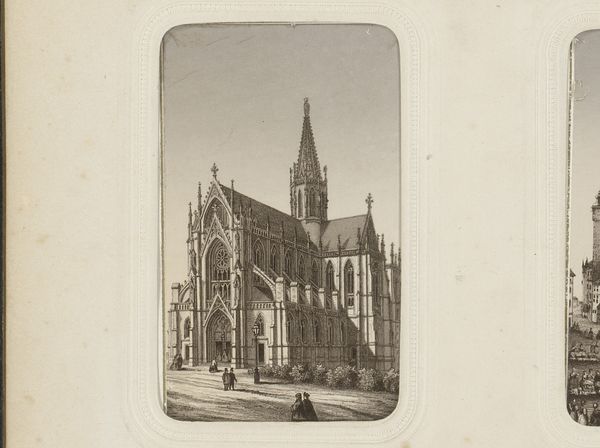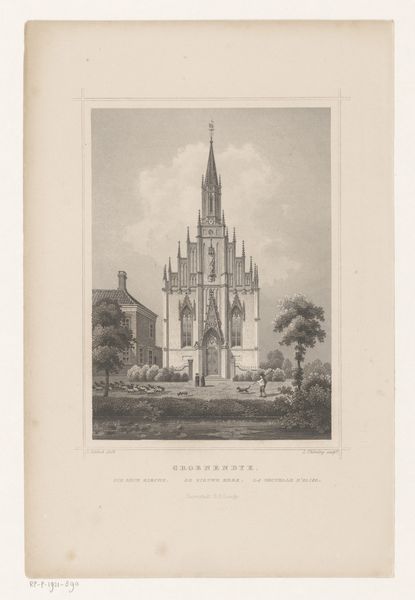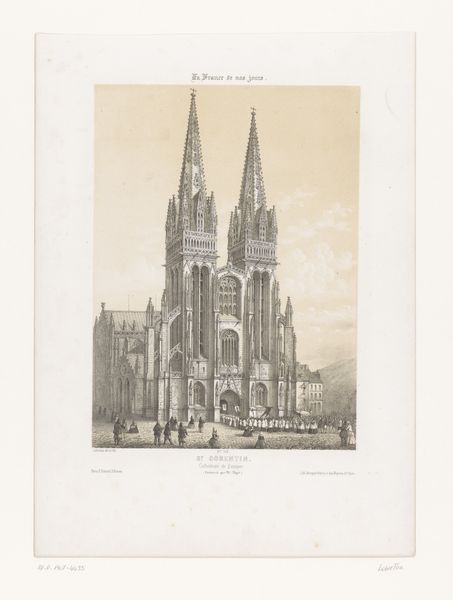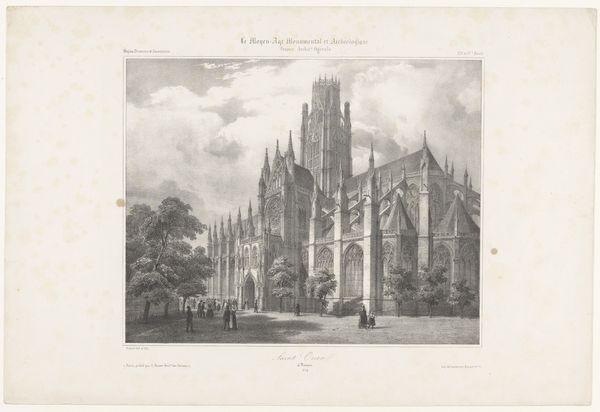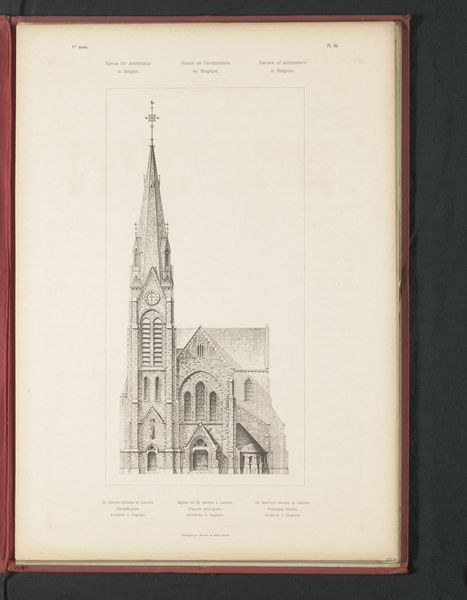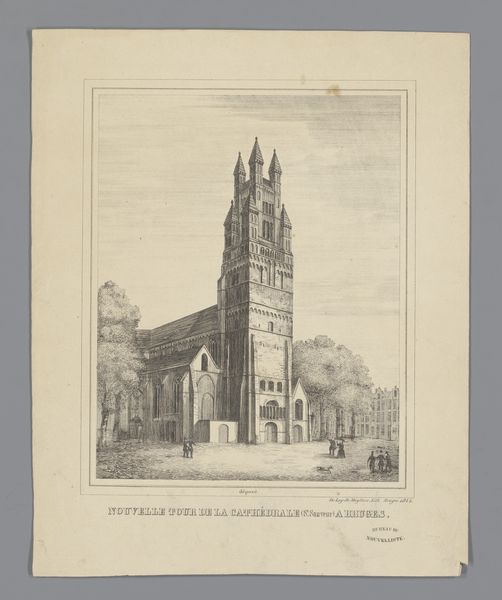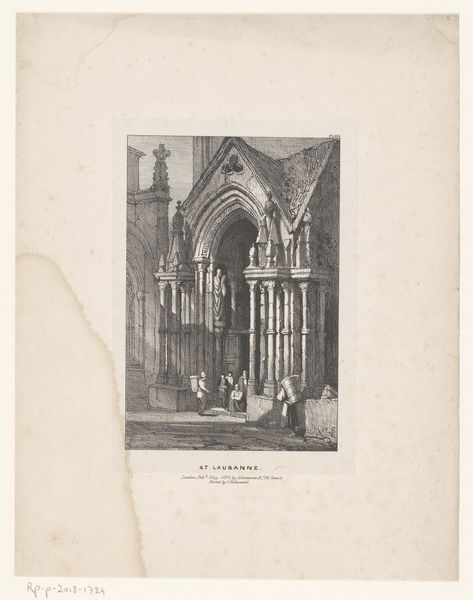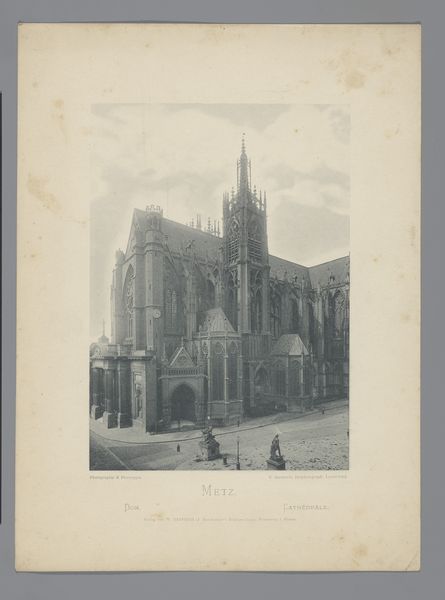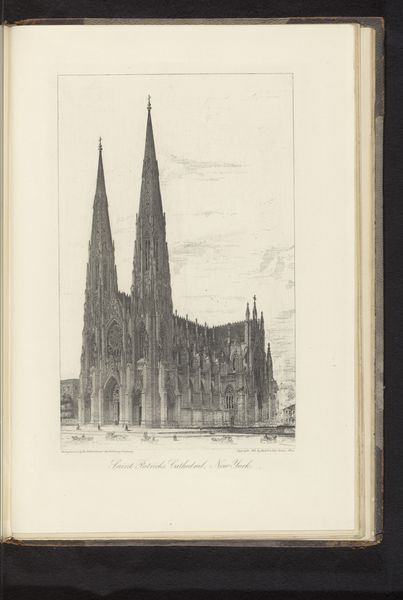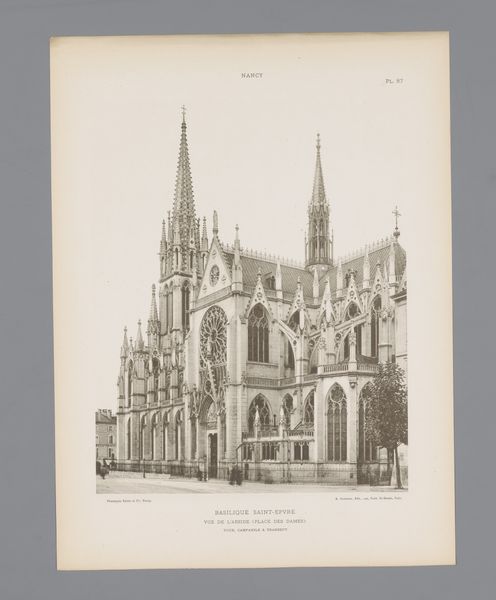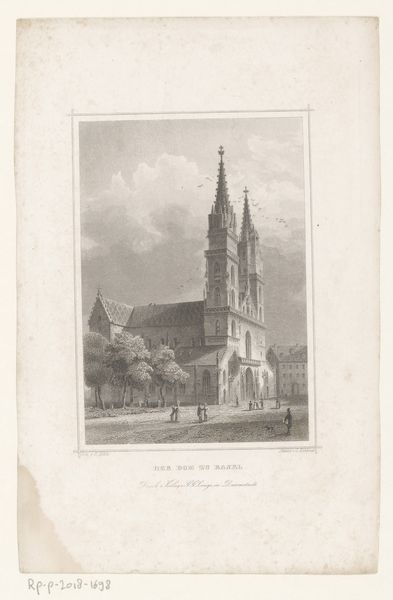
Church of the Saviour (First Unitarian Congregational), Brooklyn 1845
0:00
0:00
drawing, print
#
photo of handprinted image
#
drawing
#
aged paper
#
toned paper
#
water colours
#
muted colour palette
# print
#
light coloured
#
white palette
#
watercolour illustration
#
soft colour palette
#
watercolor
Dimensions: Image: 16 15/16 × 13 3/8 in. (43 × 34 cm) Sheet: 22 1/16 × 18 in. (56 × 45.7 cm)
Copyright: Public Domain
Curator: This delicate print from 1845, titled "Church of the Saviour, Brooklyn," offers us a glimpse into 19th-century religious architecture and urban life. The artist, Ezra Bisbee, captured the church using what appears to be watercolor on toned paper. Editor: My first impression is one of serene grandeur. The church seems to loom large, yet the watercolor technique lends a softness that tempers its imposing size. Curator: Indeed. The choice of watercolor for such a subject is interesting. While Gothic Revival architecture often sought to emulate the permanence of stone, watercolor lends itself to the ephemeral, mirroring perhaps the changing social landscape of Brooklyn at the time. We must remember, the Unitarian movement was one that welcomed social reform. Editor: That's fascinating! And it shows. The symbolism inherent in religious structures is ever present. Even more the imposing steeple points upwards, connecting earth to the divine. The soft coloration does, like you say, speak to changing, perhaps less stern, interpretations. Notice also how Bisbee situated figures modestly in front. A touch of everyday life at the gates of spiritual ascension. Curator: Precisely! Bisbee’s choice isn’t merely aesthetic; it’s a statement about the place of religion in a rapidly modernizing society. Churches started becoming about communities, rather than exclusively about doctrine. Editor: It also brings forward a powerful aspect. Those walking figures could very well indicate a connection between the personal journey and a sacred space. Curator: Absolutely. And remember, Unitarianism was at the forefront of social justice movements. The Church of the Saviour, visually softened yet undeniably present, stands as a symbol of that tension—between tradition and progress. Bisbee masterfully portrays that dynamic here. Editor: It makes me think about how we often project our aspirations and hopes onto the built environment and how images of such places help us carry that collective memory forward. Thank you. Curator: Yes. The beauty and charm in its art can only bring understanding and peace of mind in return.
Comments
No comments
Be the first to comment and join the conversation on the ultimate creative platform.
